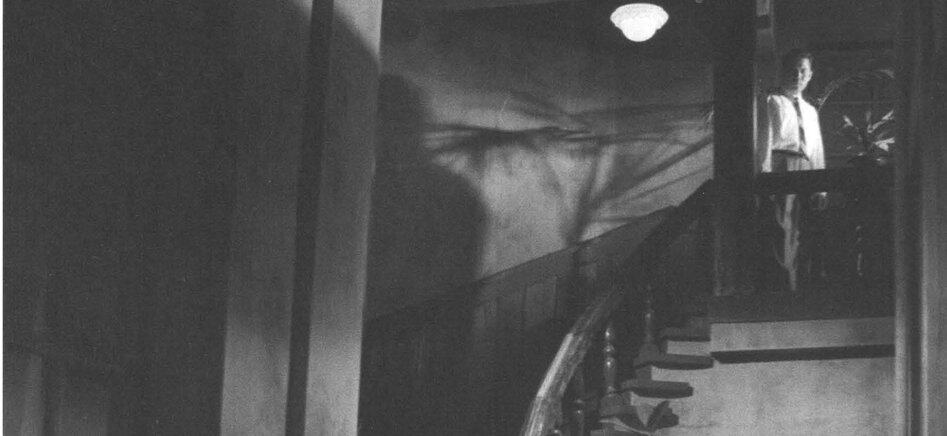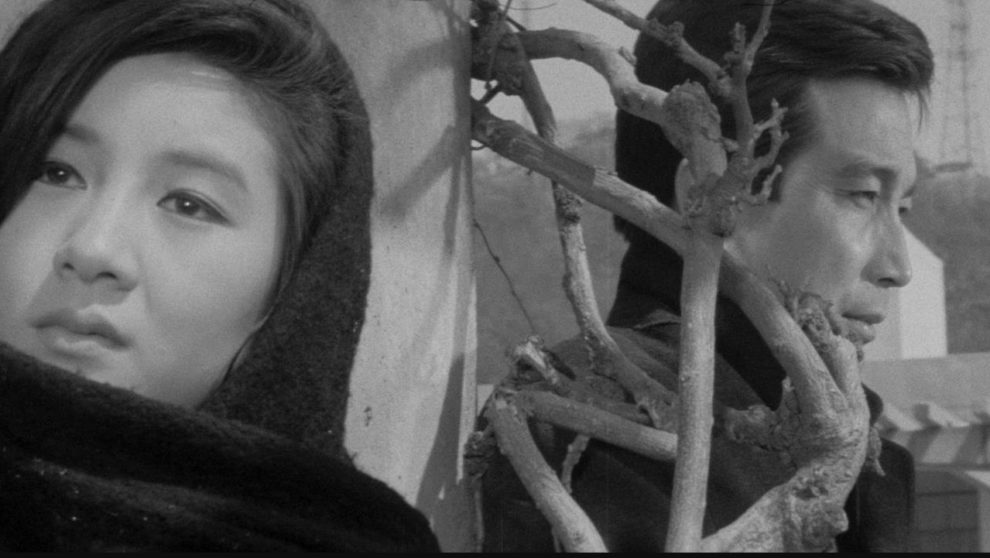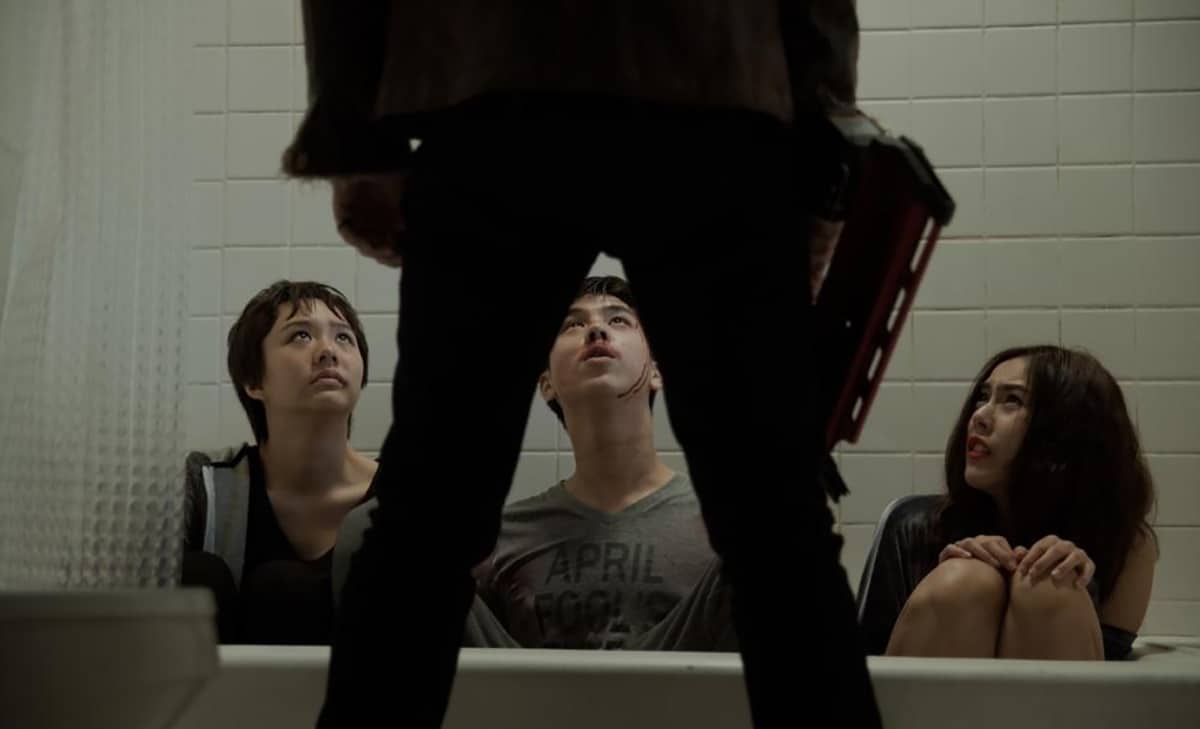One of the most important Korean filmmakers in the 1960s and 70s, Lee Man-hee established his reputation as a master of genre cinema, at a time the industry had yet to embrace horrors and thrillers, which have since become staples of the local film scene. Born in 1931 as the youngest of eight children, Lee took part in the Korean War as a codebreaker before entering the film industry in 1956, working as an assistant director for filmmakers such as Ahn Jong-hwa, Park Gu and Kim Myeong-je. He debuted as a filmmaker in his own right with “Kaleidoscope” in 1961, which featured the famous actor Kim Seung-ho. His third film, “Call 112” (1962) brought Le commercial success and his next task was to revolutionise Korea's genre scene, notably with the horror “The Devil's Stairway” and the film noir ” Black Hair”, both in 1964. Not one to stick to one formula, Lee also made a mark as an artistic filmmaker, helming the classic love story “Late Autumn” (1966), which, though it has since been lost, has been remade by the likes of Kim Ki-young and Kim Tae-yong. He continued his winning streak with “Homebound” in 1967 and “Holiday” in 1968, which have both stood the test of time. As the industry began to falter, fewer opportunities came his way but he remained busy in the early 70s, ending his career with the road movie “The Road to Sampo” (1975). He died of liver cirrhosis before the film was released. Lee made over 50 films in his life and left behind daughter Lee Hye-young, who became a famous actress in the 1980s. (source: KOFIC)
As a tribute of one of the main reasons for someone to follow the Korean Film Archive channel on YouTube, we present 10 movies of this great Korean filmmaker, including links to watch the movie, with the exception of “A Day Off”, which has been removed for licensing reasons. The order of the titles is chronological
1. The Marines Who Never Returned (1963)

The story focuses on a platoon of marines, who, as the movie begins, are fighting a battle against the North in the ruins of a city. The fighting scene is exquisitely shot, highlighting the budget Lee had in his hands, but the true impact comes when they witness the killing of a woman who tries to run away with her little daughter, and even more so, when they enter a building where they find a number of people hanging from the ceiling along the even more who are lying dead on the floor. One of them happens to be Jeong-ik's (one of the soldiers) sister, in an element that highlights the combination of melodrama and anti-war message that form two of the most central elements of the narrative. Nevertheless, the men decide to “adopt” the little girl, Yeong-hee, who eventually becomes the mascot of the platoon, in a series of sequences that are rather sweet and funny to witness, particularly through their efforts to hide her from their commander, or the fact that she gives funnily derogatory nicknames to everyone. At the same time, some tension does exist between the soldiers, as Choi is the brother of the man who joined the others and ended up killing both the girl's father and Jeong-ik's sister. After a break at a bar of Korean hostesses that is off-limits to Korean men, which does involve some friction, though, the last part deals with the crew facing the People's Volunteer Army in the mountains.
Lee Man-hee-I directs a movie whose elements can be described as contradictory. For example, the anti-war message is rather intense, as the massacre scene, the splitting of brothers to opposing sides, and the finale that cements the title fully. At the same time, the camaraderie of the soldiers, the way they take care of the little girl in a manner that only a family could, and the entertainment they have, mostly through buffoonery, as in the case of the dancing scene, seem to promote actually the Korean Army, and in conjunction, the war itself. The same applies to the ending, which both shows the blights of war in melodramatic terms, but also exemplifies the soldiers who are willing to do their duty even in the face of death.
2. The Devil's Stairway (1964)

The story focuses on a platoon of marines, who, as the movie begins, are fighting a battle against the North in the ruins of a city. The fighting scene is exquisitely shot, highlighting the budget Lee had in his hands, but the true impact comes when they witness the killing of a woman who tries to run away with her little daughter, and even more so, when they enter a building where they find a number of people hanging from the ceiling along the even more who are lying dead on the floor. One of them happens to be Jeong-ik's (one of the soldiers) sister, in an element that highlights the combination of melodrama and anti-war message that form two of the most central elements of the narrative. Nevertheless, the men decide to “adopt” the little girl, Yeong-hee, who eventually becomes the mascot of the platoon, in a series of sequences that are rather sweet and funny to witness, particularly through their efforts to hide her from their commander, or the fact that she gives funnily derogatory nicknames to everyone. At the same time, some tension does exist between the soldiers, as Choi is the brother of the man who joined the others and ended up killing both the girl's father and Jeong-ik's sister. After a break at a bar of Korean hostesses that is off-limits to Korean men, which does involve some friction, though, the last part deals with the crew facing the People's Volunteer Army in the mountains.
The story focuses on a platoon of marines, who, as the movie begins, are fighting a battle against the North in the ruins of a city. The fighting scene is exquisitely shot, highlighting the budget Lee had in his hands, but the true impact comes when they witness the killing of a woman who tries to run away with her little daughter, and even more so, when they enter a building where they find a number of people hanging from the ceiling along the even more who are lying dead on the floor. One of them happens to be Jeong-ik's (one of the soldiers) sister, in an element that highlights the combination of melodrama and anti-war message that form two of the most central elements of the narrative. Nevertheless, the men decide to “adopt” the little girl, Yeong-hee, who eventually becomes the mascot of the platoon, in a series of sequences that are rather sweet and funny to witness, particularly through their efforts to hide her from their commander, or the fact that she gives funnily derogatory nicknames to everyone. At the same time, some tension does exist between the soldiers, as Choi is the brother of the man who joined the others and ended up killing both the girl's father and Jeong-ik's sister. After a break at a bar of Korean hostesses that is off-limits to Korean men, which does involve some friction, though, the last part deals with the crew facing the People's Volunteer Army in the mountains.
3. A Water Mill (1966)

The story unfolds during the Joseon period, and revolves around a drifter who does not even remember his own name, who meets a mysterious woman during a festival around a water mill. The festival's purpose is to appease a demon woman who has been haunting the mill for quite some time, with the significance of the fact becoming obvious as the story progresses. Nevertheless, the nameless man, who soon is given the name Bang-won, wins a wrestling match during the festival, and proving his strength, soon finds work for the local landlord, while his fascination with the woman he met continues and even reaches the borders of obsession. When he finds out the woman's name is Boon-i and that she has a great debt towards the landlord, he decides to pay up, and after much struggles and beatings, he manages to do so, and “Escape” the area and the landlord, whose actual purpose was to take the girl as his wife. Alas, Bang-won has promised his whole life to another landlord, in order to pay the debt, and now finds himself in the service of a true womanizer, who almost immediately proceeds on courting Boon-i, while finding ways to keep Bang-won away from the household. Inevitably, violence ensues again.
Despite the permeating sense of surrealism with elements of the supernatural that permeates the film, Lee Man-hee-I actually directs a rather harsh parable that unveils in two axes. The first and most obvious one revolves around love, but in this case, in order to highlight the blights of obsession and the destruction that female beauty can cause to a man, with Boon-i functioning as the femme fatale (although not a purposeful one, at least for the majority of the film) and Bang-won as the victim. The way that a strong, moral, but in essence innocent and fool man embarks on a non-stop downward spiral due to love is the narrative's most impressive aspect, with Shin Young-kyun giving a wonderful one-man show as Boon-i, with his performance actually carrying the whole film. On the other hand, Ko Eun-ah-I as Boon-i has a more minor role, as she exemplifies her beauty more than her acting.
4. The Starting Point (1967)

The movie begins with its most impressive sequence, where, in noir style, Seok-goo, a gangster, is trying to steal a briefcase from an office building. Unfortunately for him, the guard proves to be as dedicated as possible, and a rather brutal battle ensues, first in the stairs and then under a roller door, which ends up in tragedy and a botched job for the protagonist. A bit later, we see him being chastised by his boss, Lee, because he has regrets just for the murder and not his failure. Next, Lee sends him into a mountain resort to “clear his head” but before Seok-goo arrives there, his boss hires a prostitute, Seon, to kill him during his trip. The two of them, however, fall in love, the girl reveals everything, and soon the two of them are on the hunt by the killers Lee has sent.
“The Starting Point” is a truly uneven film, since the beginning and ending are filled with action, but the middle part, in the cabin in Mountain Seorak, unfolds like a type of social/romantic drama, essentially being totally disconnected from the rest of the movie, apart from progressing the story. Regarding the action aspect, Lee Man-hee-I's directorial abilities shine intently, with him taking advantage of both the office building and the mountainous setting to present a series of brutal and utterly agonizing scenes. The way he implements the stairs in both settings in particular is astonishing, with the choreographies being characterized by a brutal realism, and DP Seo Jeong-min capturing both the environment and the fights in truly great fashion. Also of note is Kang-Shin Sung-il's acting in these scenes, whose struggle, and the fact that is powerful but not all-mighty being expressed in a rather convincing way.
5. Homebound (1967)

Choe Dong-u is a writer who was disabled during the Korean War, and is now spending his time between a bed and a wheelchair. At the same time, he is contributing a serial to a newspaper, about his current life, and particularly the love and dedication his wife, Ji-yeon, shows him. However, when she gets his work to his publisher, he suggests that the story of a faithful wife is boring, and in order to be appealing, the woman protagonist should be a “sinner”. As Ji-yeon realizes how life is, she starts going out with a young man. Her husband eventually finds out, but is not sure how to proceed, due to her dedication that far, and eventually seeks care and advice from his sister, Choe I-yeong.
Choe Dong-u is a writer who was disabled during the Korean War, and is now spending his time between a bed and a wheelchair. At the same time, he is contributing a serial to a newspaper, about his current life, and particularly the love and dedication his wife, Ji-yeon, shows him. However, when she gets his work to his publisher, he suggests that the story of a faithful wife is boring, and in order to be appealing, the woman protagonist should be a “sinner”. As Ji-yeon realizes how life is, she starts going out with a young man. Her husband eventually finds out, but is not sure how to proceed, due to her dedication that far, and eventually seeks care and advice from his sister, Choe I-yeong.
















